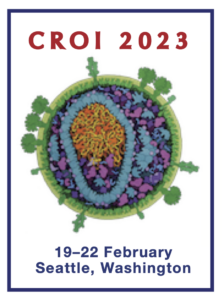CROI 2023: Bone density profiles for CAB-LA vs TDF/FTC oral PrEP in young adults
10 March 2023. Related: Conference reports, Side effects, HIV prevention and transmission.
 TDF/FTC oral PrEP is associated with BMD loss but the impact of CAB-LA on BMD is unknown. CROI 2023 included a BMD study that demonstrated median increased BMD percentage from baseline (from +0.5 to +1.5%) for participants who received CAB-LA PrEP. [1]
TDF/FTC oral PrEP is associated with BMD loss but the impact of CAB-LA on BMD is unknown. CROI 2023 included a BMD study that demonstrated median increased BMD percentage from baseline (from +0.5 to +1.5%) for participants who received CAB-LA PrEP. [1]
A bone sub-study of HPTN-083 was conducted at 19 sites and included people taking oral (TDF/FTC, n=122) or CAB-LA (n=132) PrEP. Low BMD (Z-score ≤2.0) at baseline was observed for 15% (oral) and 16% (LA) of participants. The study measured BMD at lumbar spine, femoral neck and hip.
At week 105, participants in the oral group saw a median percentage decline in BMD across the three sites of –0.5 to –1%. Conversely, median BMD increased by +0.5 to +1.5% for participants receiving CAB-LA. These findings suggest that those at risk of osteoporosis or fracture may be better suited to CAB-LA PrEP.
This sub-study recruited gay men (90%) and trans women (10%) and other baseline demographics included: white (47%), Black (31%) and Asian (12%). Median age was 29 years (IQR: 23 to 41) for oral and 26 years (IQR: 22 to 31 years) for CAB-LA PrEP formulations. 8% of the study population were ≥50 years old.
comment
These results are not unexpected although it is unclear whether the overall differences at week 105 are statistically significant given the lower age at baseline in the CAB-LA arm, when bones are still growing.
Reference
Brown TT et al. Bone density changes with CAB-LA or TDF/FTC PrEP in MSM and TGW in HPTN 083. 30th CROI, 19–22 February 2023, 30th Conference on Retroviruses and Opportunistic Infections, 19 – 22 February 2023, Seattle and hybrid . Poster Presentation 987.
https://www.croiconference.org/abstract/bone-density-changes-with-cab-la-or-tdf-ftc-prep-in-msm-and-tgw-in-hptn-083/ (abstract)
This report was first published on 9 March 2023.

